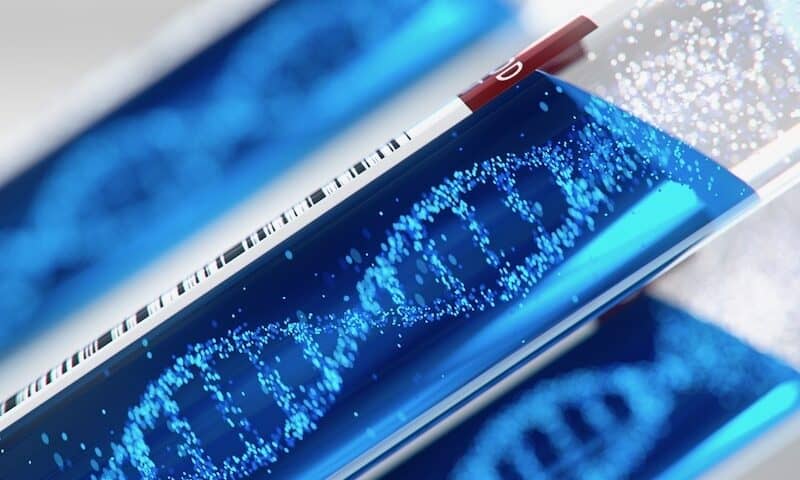Move over, gene editing. There’s a new kid on the block. Tessera Therapeutics is pioneering “gene writing,” a kind of genetic medicine it hopes will surmount the limitations of gene editing and gene therapy—and investors have bet more than $230 million on the approach.
At its core, gene writing simply means writing short or long messages into the genome to treat disease, said Tessera CEO Geoffrey von Maltzahn, Ph.D. “What that allows is one to be able to cure or prevent a disease from ever happening by writing in the code of DNA, which of course drives the biology in every single cell in the body,” he said. Tessera is developing multiple ways to do it.
Maltzahn sees gene writing as the next step in the evolution of medicine from small molecules to protein therapeutics to RNA- and DNA-targeting treatments. The approach is based on mobile genetic elements, or MGEs, a class of genes that turns out to be the most abundant category of genes in nature. MGEs are part of the genome that doesn’t code directly for proteins—previously dismissed as “junk DNA”—but rather, evolved to “write themselves into new locations,” Maltzahn said.
“The genomes of furry and green things in the living world are replete with mobile genetic elements,” Maltzahn said. The Flagship Pioneering company has been working under the radar for three years, building technology to evaluate thousands of MGEs in human cells and turn them into medicines. The company came out of the shadows in July 2020.
“Through an engineering of mobile genetic elements, we discovered what we call gene writers that can make every type of base pair alteration. We can make simultaneous base pair substitutions and do scarless insertion and scarless deletion,” Maltzahn said. The technology also allows the writing of an entire, functional gene in the genome using RNA, which can be useful for diseases caused by many different mutations in the same gene.
Now, Tessera will use its series B haul to keep building its gene writing technology, expand its team and set up manufacturing and automated systems so it can scale its work up. The company counts 50 staffers and hopes to add another 100 in the “near future.” It hasn’t disclosed which disease areas it’s interested in yet, but said gene writing could be useful in cardiovascular, neurodegenerative and infectious diseases as well as cancer.
RNA-based gene writing could go where CRISPR-based editing can’t: “Virtually all gene editing innovation is derived from a category of enzymes from nature called nucleases that cut DNA,” Maltzahn said. Cutting DNA prompts the cell to try to repair the gene, often turning it off in the process.
“If you’re trying to turn genes off, CRISPR and other nucleases are incredible, but most of the unmet need in genetic medicine requires you to write a therapeutic message into a site … CRISPR is not awesome at doing that, but that is no fault of its upbringing—its job in nature is to destroy invading DNA,” he said. After all, CRISPR-Cas9 is a mechanism used by bacteria to defend against viruses.
Tessera’s approach could also offer advantages over gene therapies, many of which are delivered using adeno-associated viruses (AAVs). Delivering its gene-writing RNAs to cells in a lipid nanoparticle means its treatments can be re-dosed and tailored to individual needs. This isn’t possible for AAV-based gene therapies, because the human body mounts an immune response against the viral vector.
“You pick one dose in the realm of gene therapy, needing to get it right, but inevitably overdosing some patients and underdosing others,” Maltzahn said. “But because you’re vaccinating patients against your viral vector, you have a single opportunity to administer it. Here, we could envision dosing progressively over time to a desired effect on a patient-by-patient basis.”
Finally, combining Tessera’s third category of gene writers with AAV-based gene therapies could make the latter available for younger patients who are still growing.
“Today, if you administer AAV, when the cell divides, it replicates its own genome, ignoring the AAV genome or episome (the genetic sequence inside the vector),” Maltzahn said. “So, in rare, genetic diseases that manifest in dividing cell types like the liver, current AAVs can’t be administered to children or infants where those diseases are most frequently diagnosed and most severe.”

